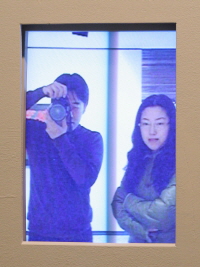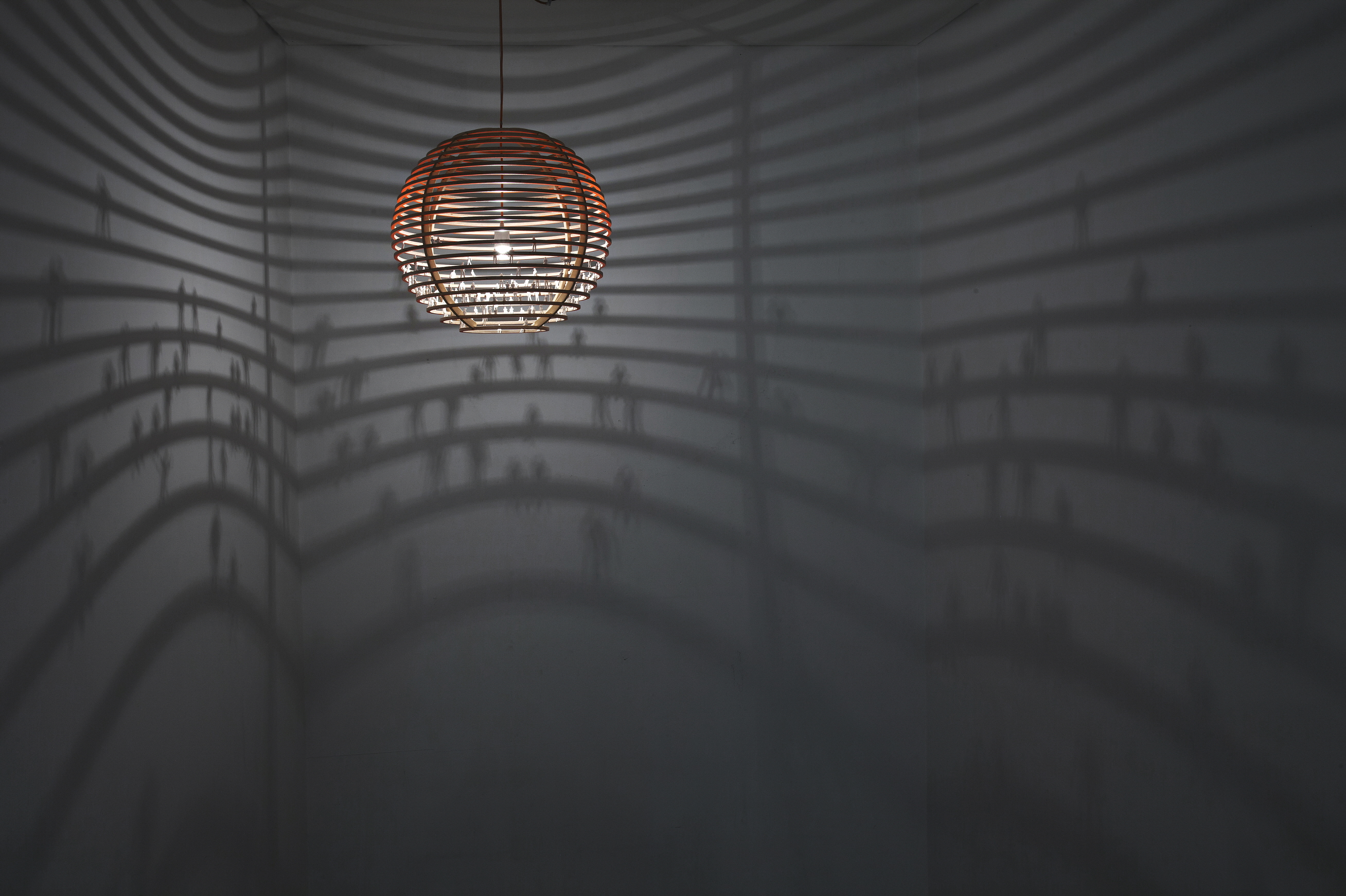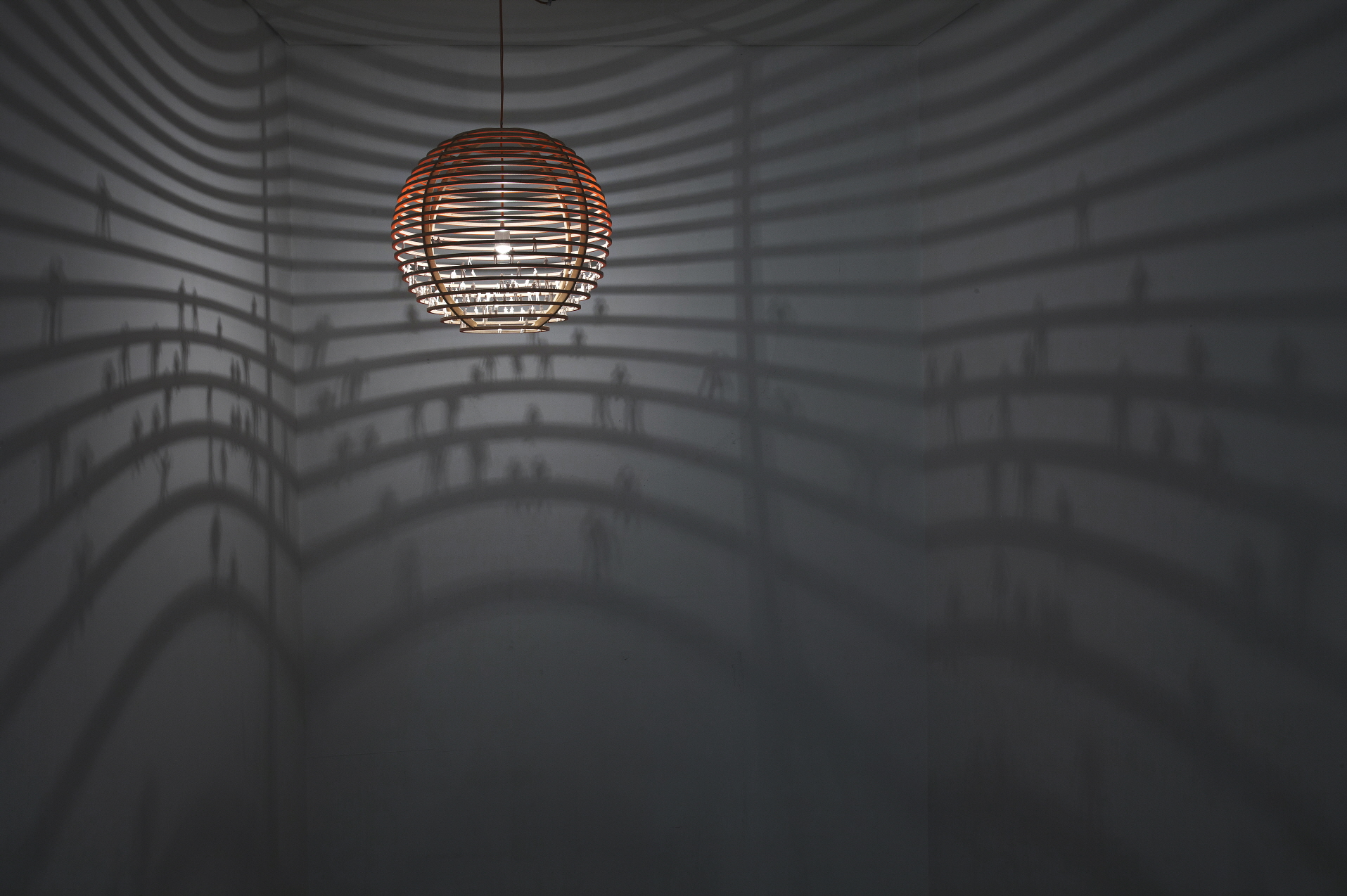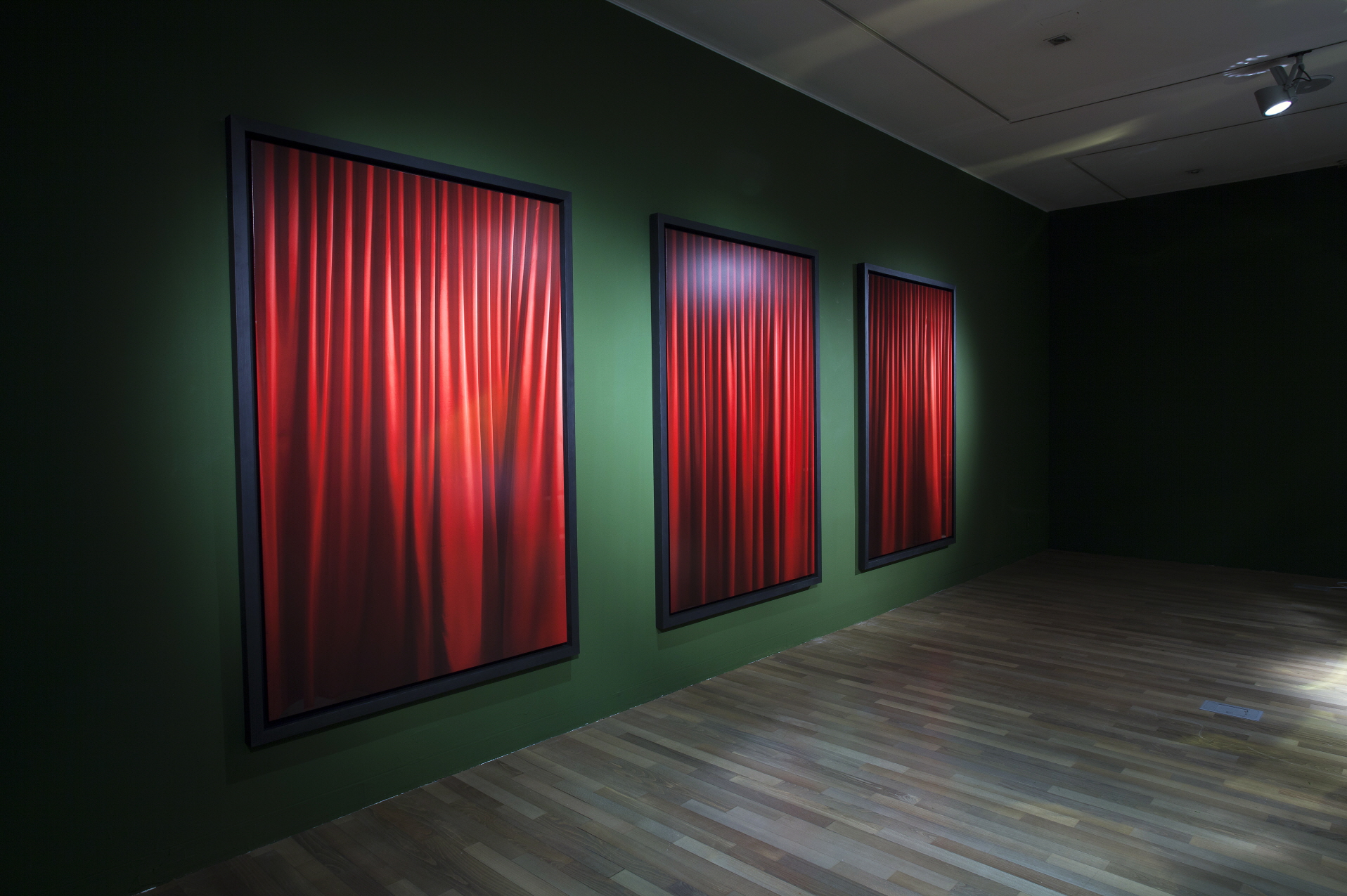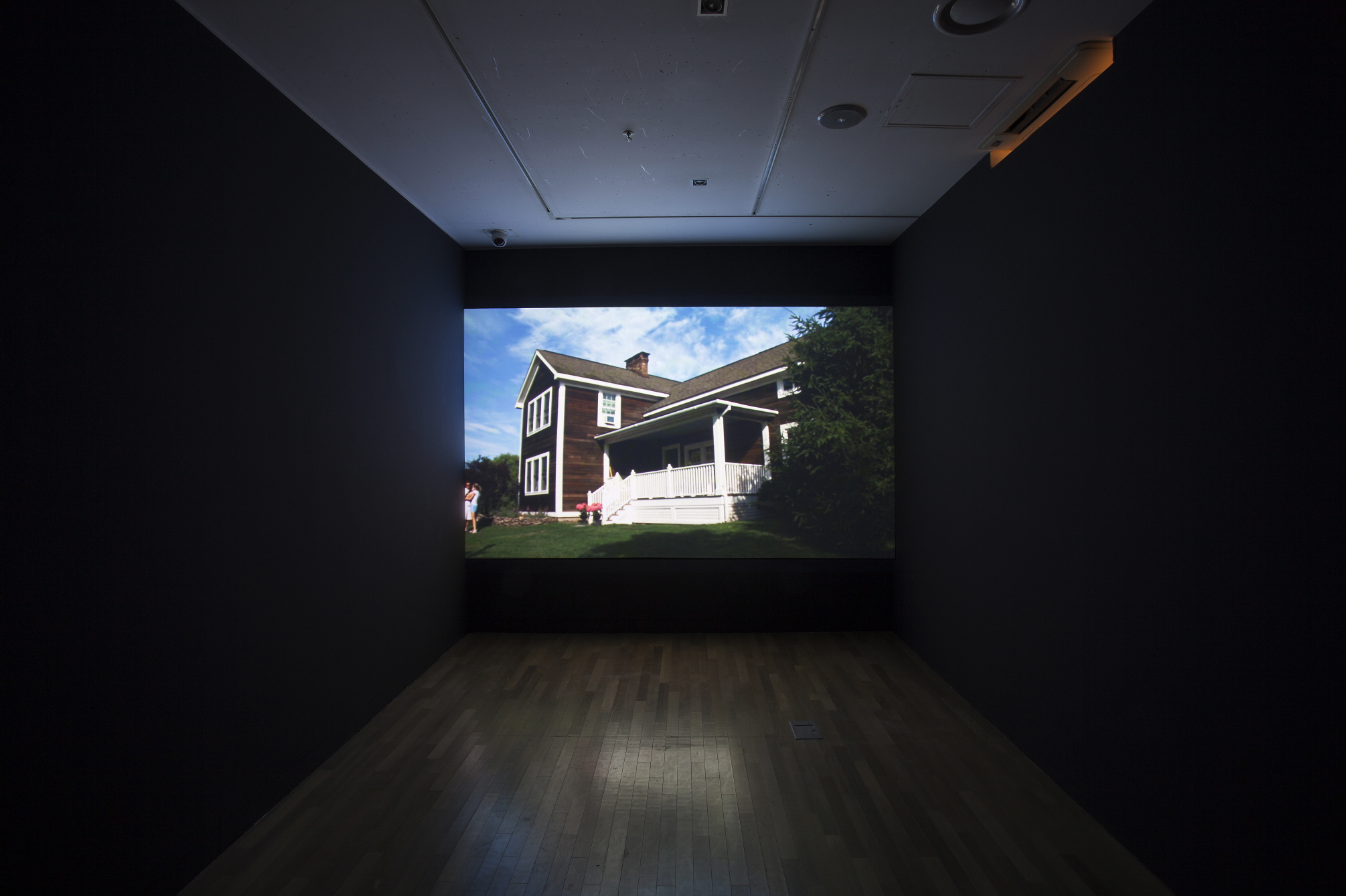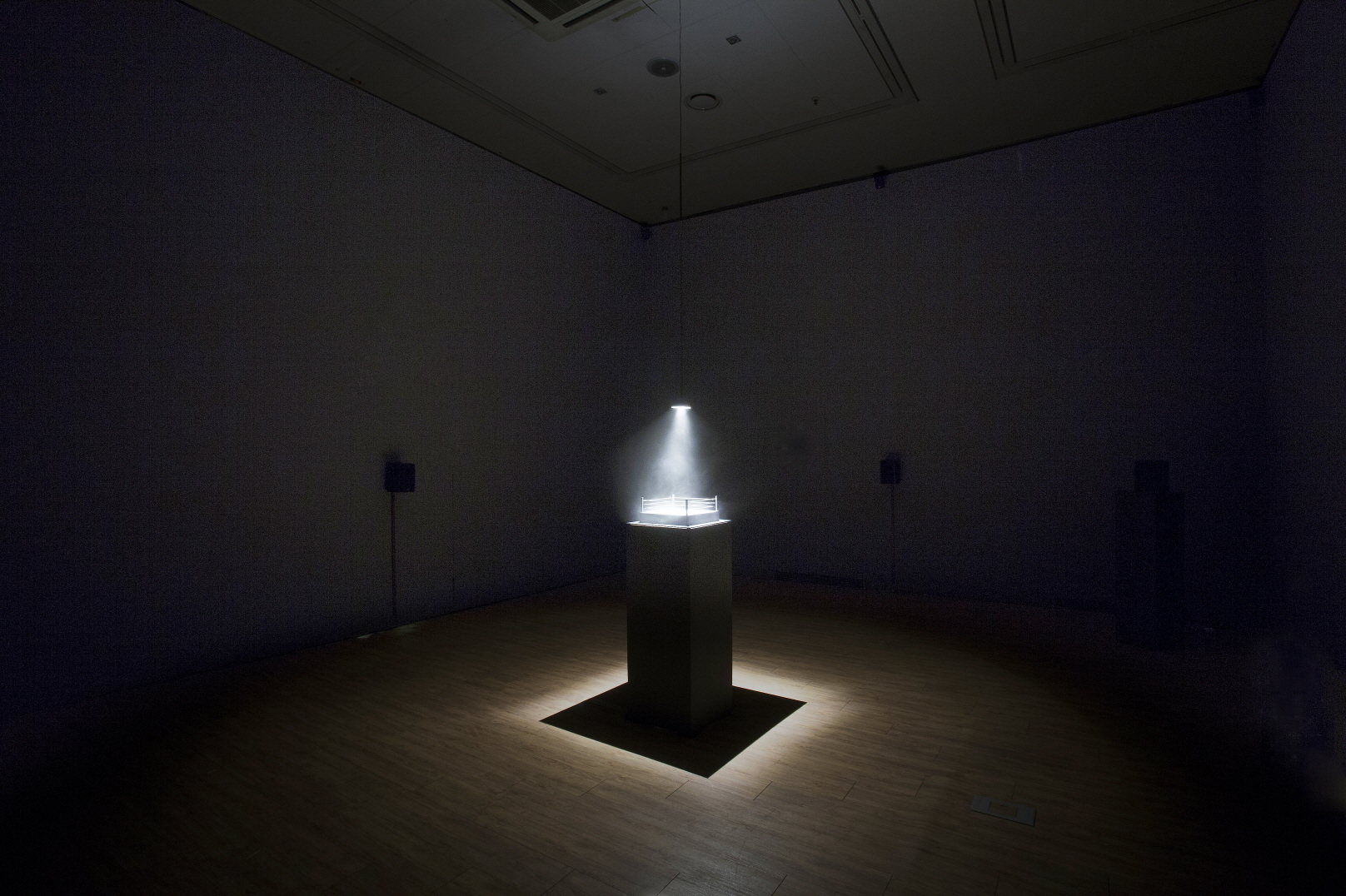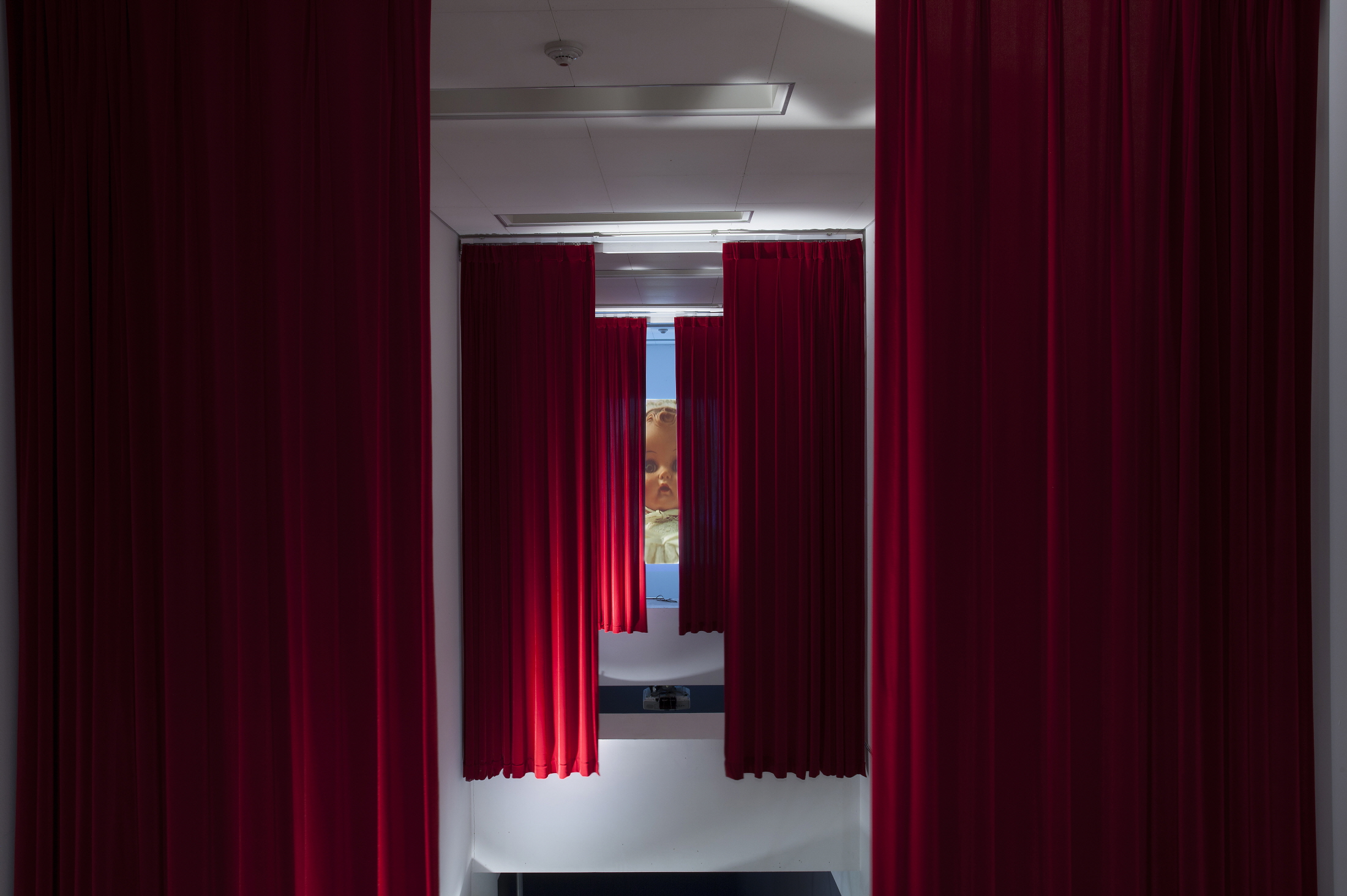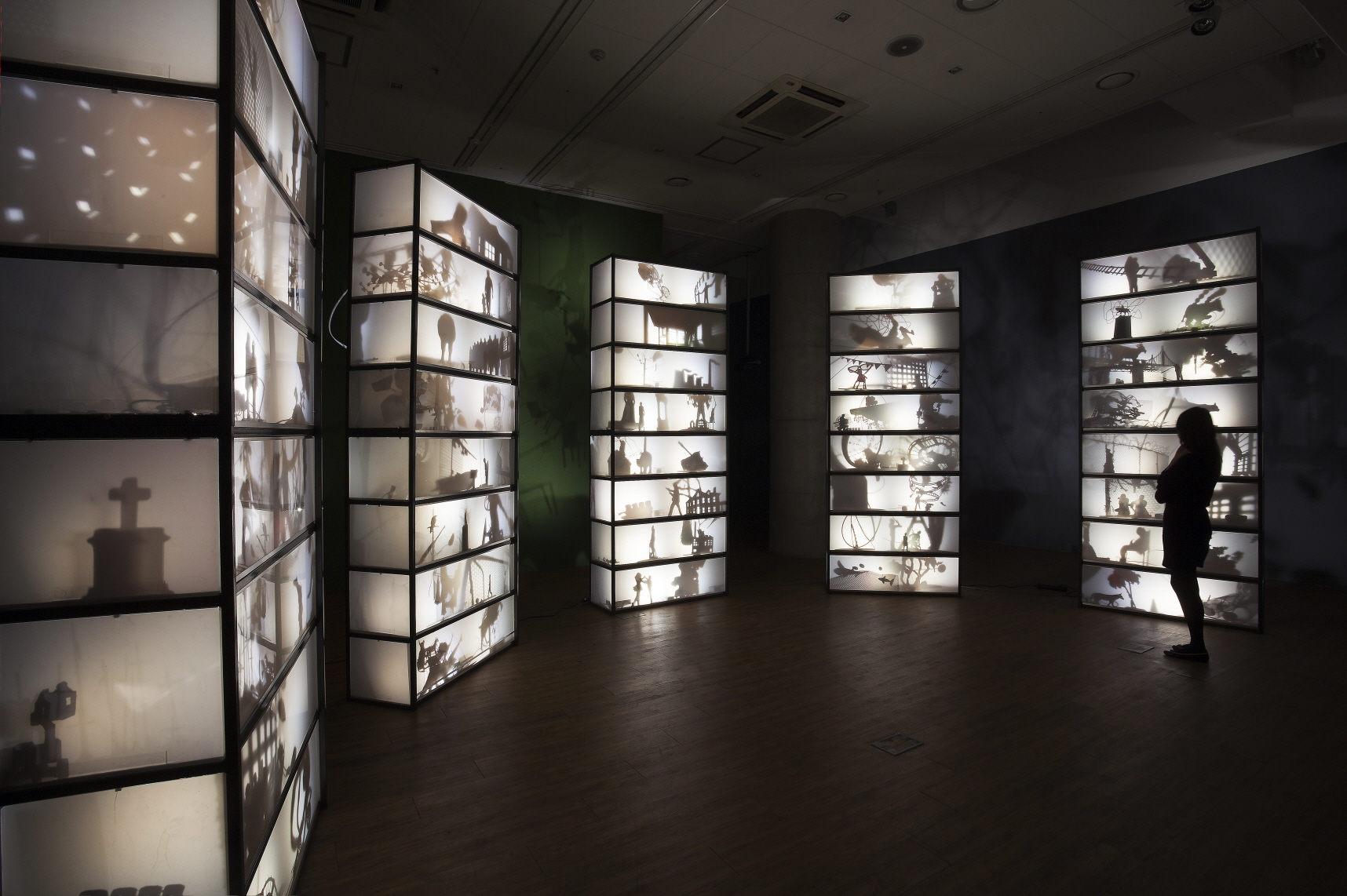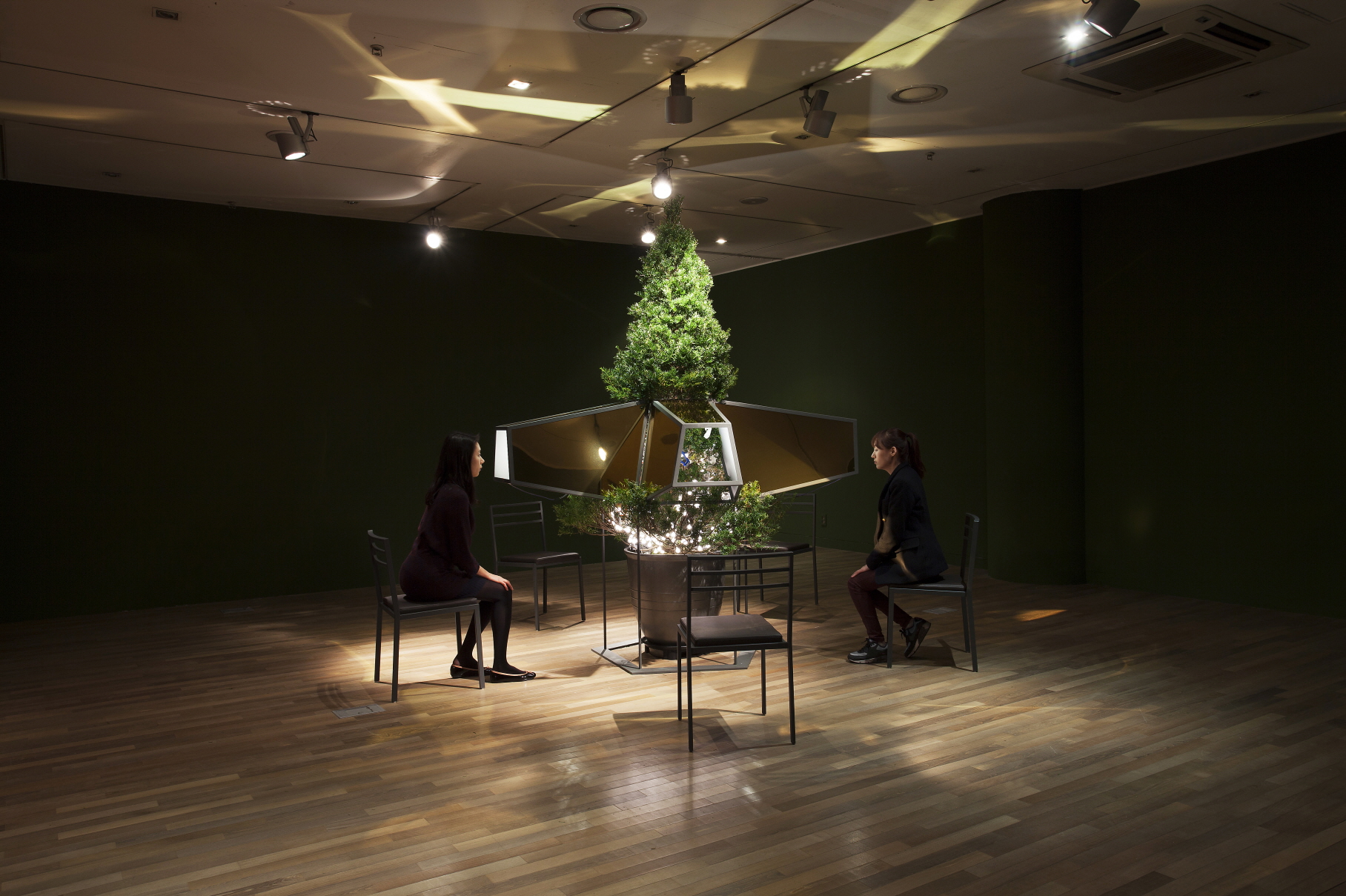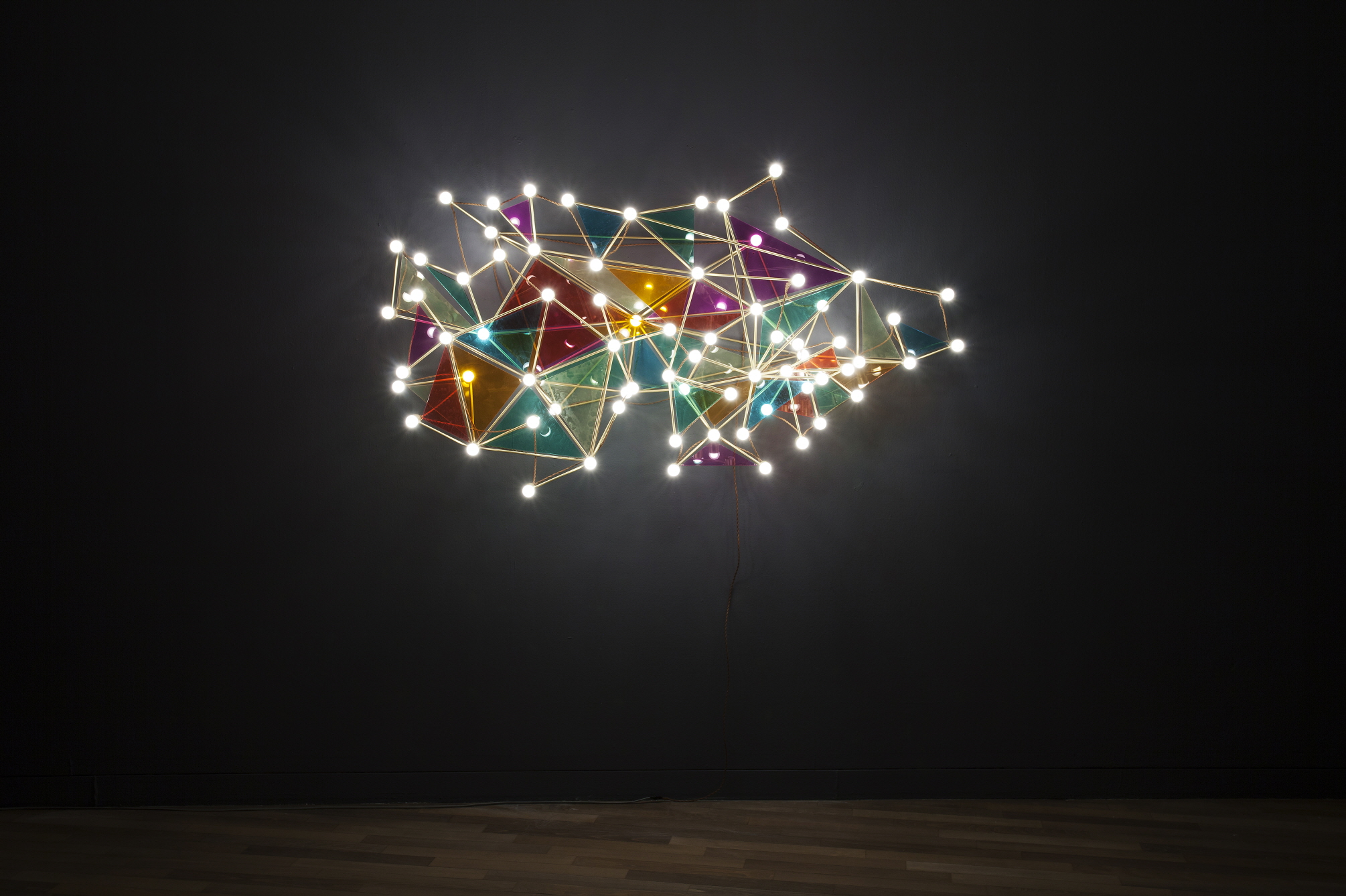Cities, Masses and Individuals--Mioon’s Imagery
Through their photographic and video work, Mioon (Min Kim and Moon Choi) provides social commentary in contemporary landscapes as embodied by the masses, the collective, and the spectacle of a society that symbolizes the age of the network media, as well as a diversity of issues faced by individuals inhabiting this backdrop. Their artwork actively draws invisible social systems and their resultant meanings into context, and from a critical perspective can be read as visual interpretations of cultural texts on cities, crowds and individuals.
The masses, the metropolitan human
In their artworks ranging from the Tourist Project (2003) and Human Stream (2005) to the more recent Lead Me to Your Door (2011), Mioon has long been focusing on the population inhabiting a metropolis. Their interest in the masses as a subject matter started from their experience of witnessing mass spectacles in the 1990s. The panorama of people gathered in a series of massive demonstrations in confrontation with government authority influenced this artist duo to take a critical stance towards social and cultural predicaments that cause such uproar. It also served as an opportunity for them to explore the nature and characteristics of the crowd that drifts as a single entity, physically individual but mentally united. Subsequently, the Western European individualism they had encountered as Asian students studying abroad in Germany acted as a driving force to explore the collective psychology prevalent in Korea as a special cultural phenomenon, and to translate it as their central artistic theme.
The topographical point that attracts Mioon is the metropolis and its crowd, in other words, the metropolitan masses. A large city is a space where an overwhelming desire for consumption, in the name of capitalism, is prevalent. The image of an enormous city is evoked by stacks of product packaging boxes arranged in The Visible City (2007), it is a visual metaphor for capitalism in which the dialectic of circulation and exchanges is maximized. Reminiscent of an aspect found in Guy Debord’s best known work, Society of the Spectacle, the artist duo ceaselessly present product images created by mass production and consumption, and fleeting metropolitan illusions. Viewers who wander among such fantasies, just like aimless flaneurs in the metropolis, can be considered the metropolitan masses characterized by their unquestioning consumption of product brands and spectacular, superficial images endlessly reproduced by the city.
As fetish worshippers, the metropolitan people are often placed under scrutiny for the uniformity inherent in the collectivism of the crowd. Tourist Project (2003) signifies that many tourists flocking to the world’s tourist attractions such as the Parthenon, the Pyramids, and the Forbidden City, are aimless people who consume the superficial illusion of cities whose original context has been eliminated and intentionally replaced with materialistic values by the tourism industry. At the very moment when a certain place becomes overcrowded with anonymous tourists, Mioon blows away and scatters them in the wind to satirize the collectivist uniformity of the public incapable of controlling their individual dynamics. The screen composed of feathery images is a visual allegory that insinuates the frivolity of the crowd--disposable, and empty of substance.
Criticism against the passiveness of the masses who only accept information unwittingly while incapable of producing complex expressions independently is generally found in most of Mioon’s artworks from the first half of the 2000s. Karaoke Project shows an audience repeatedly emptying or filling the auditorium in response to the viewer’s singing. Human Stream displays a one-way traffic of the masses driven by an insane zeal towards some sort of idol. This project is a visual critique of an undiscerning collective psychology, a communal spirit that aligns individual sentiments and judgment into a unilateral direction. They are also a social statement of a time period that imposes passiveness and collectivism, while being controlled by an external system. In particular, Mioon’s crowd panorama is indicative of the characteristics of the crowd--its formation, growth, expansion and extinction. As mentioned by the artists, the traits of an organism are inherent in the crowd in that it also begins with a gathering of a few people that gradually forms a crowd, grows and expands, then at a critical point, explodes and dissolves.
The crowd in Mioon’s works often appears from the audience seats of the theatrical space. In some works such as Holoaudience (2005) and Aside of Audience (2008), the artist duo shifts the viewers’ focus from the stage to the auditorium, and positions the spotlight on the crowd of people gathered. The audience members who partake in the same event unfolding on stage best reflect the nature of the masses that follow the principle of unanimity. Entering the exhibition space of Holoaudience, viewers find the image of an applauding audience in the four hundred hologram panels, which are shaped, liked a theater auditorium. The audience, who repeat the ‘act of clapping’ in response to the sensors, is presented as a mass unit repeating the same act over and again rather than acting as individual beings. If the crowd in Holoaudience, as an extension of the crowd imagery in Mioon’s previous works, consists of entities denied the ability to formulate complex speech, the crowd in Aside of Audience is presented as individual agents that give themselves meaning and actively speak for themselves.
Aside of Audience is a video installation where a crowd of 108 people appear in three screen stages. Mioon postulates that all of them are artists and conducts hypothetical interviews on what it means to be an artist in today’s society. Ironically, the image of the artist they refer to can be summarized as a kind of stereotypical myth of the artist endlessly reproduced by the media. Metaphorically expressing the common notion of the artist, this work implies a society in which a common symbolic system exists. Stories of each character in the work, introduced simultaneously despite differences in time and space, are suggested in the form of dramatic aside that is inaudible to each other. This is similar to the communication system of internet users in cyberspace that transcends time and space.
From masses to individuals
For Mioon, the focus point in masses and groups is neither the collective situation of people gathered nor simply the way they act; rather, it is the invisible social systems and regulations, and desire for capital inherent in their acts. In Habitual Passion (2009), Mioon presents an empty, silent place instead of a tightly packed crowd or an enormous spectacle, moving their focus from the issue of masses to social systems governing them. Devoid of any context that commonly accompanies a stadium, such as players, cheering spectators and actual sports games played out according to set rules, their version of New York City’s Yankee Stadium is fossilized in a vacuum box like a relic of ancient times. The patrol car crossing the stadium with searchlights on, along with several people, leads to the idea that there exists an invisible gaze of surveillance dominating the place. The audience gazing at the tense atmosphere of the stadium from outside the box is also undeniably an entity that belongs to the system.
While Habitual Passion uses silence and tension in an attempt to interpret and represent an unstable social structure with surveillance and control over its people, Lead Me to Your Door (2011) panoramically shows the particularized narratives of the masses living in a social system where voyeurism is accepted. The two massive humanoid sculptures consisting of 88 video panels and monitors built layer upon layer depict real-life stories of ordinary people. As a metaphor for apartment buildings, the most universalized form of living space in Korean society, they reveal the desire and sense of loss felt by people living there. The different slices of lives presented on 88 stages by dozens of actors and actresses are almost equivalent to 88 ‘theatres of life.’ Allowing viewers to experience voyeurism as if they are watching the scenes through a telescope, this artwork carefully unfolds fear, fantasy, secrets and desires experienced by each individual. Focusing on the interrelation between public and private lives, and interior and exterior spaces, these sculptures are nothing but the kaleidoscopic images of ordinary people living everyday lives.
Mioon closely looks at various aspects of city crowds and illustrates their everyday lives in which they internalize the flow of desire, anxiety, and the sense of alienation in response to urban capitalism. In this sense, their works are somewhat linked to the thoughts of the German philosopher Walter Benjamin. As the place most representative of modernity, the urban complex encompasses urban buildings and spaces, the lives lived there and everyday lives of the metropolitan masses, is a recurring theme in Benjamin’s work. Just as he described in his documents on cities, numerous urban dwellers including flaneurs wandering around city streets, dandies with a strong sense of identity, ragmen and prostitutes in the backstreets, Mioon’s works visually present the physiognomy of cities in the form of a large crowds responding to urban modernity. While Benjamin defined the city as a space of duality that is both beautiful but at the same time filled with anxiety, the crowds in big cities in Mioon’s works are both the subjects and the objects of the experience of cities as the source of pleasure and hope, and yet also of anxiety and despair. This artist duo is actively expressing their social views on contemporary culture by visually decoding modern metropolitan spaces and invisible systems in existence therein.
Myeong-ji BAE (Chief Curator, Coreana Museum of Art)






